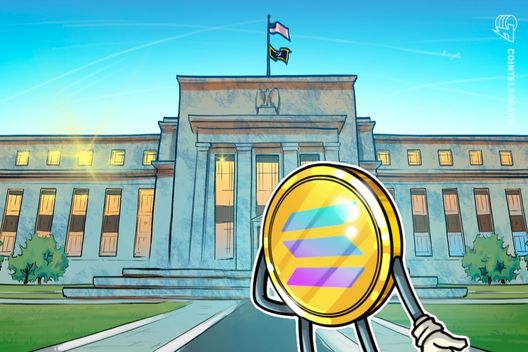The landscape of cryptocurrency continues to evolve, and XRP investors are receiving promising news that could enhance the appeal of this digital asset. Ripple announced a series of upcoming features for the XRP Ledger, aiming to make it more attractive for institutional investment. With XRP prices seeing a modest increase of 2.2% in the past 24 hours—contrasting with Bitcoin’s slight drop—there is palpable excitement in the market.
Ripple’s new initiatives focus on compliance and expanded lending options, helping to bridge the gap between regulatory requirements and innovative financial services.
Among the notable improvements, the XRP Ledger will introduce enhanced compliance functions and a new lending system that allows institutions to borrow and lend directly without intermediaries. This shift could streamline processes significantly, making it easier for companies to engage in lending while adhering to legal standards.
Additionally, Ripple’s introduction of flexible tokens—digital assets that can represent a variety of items, from bonds to collectibles—has the potential to broaden the utility of the XRP network. These tokens come with enhanced features designed to maximize their usability. The network will also implement permissions settings, giving firms the ability to control access to certain functionalities, ensuring that sensitive activities remain secure.
Perhaps most intriguing is the anticipated launch of an EVM sidechain in 2025, which could draw a wealth of developers to the XRP Ledger, integrating them into its framework.
The EVM sidechain is expected to open the door to new protocols and smart contracts that aren’t currently viable within the existing XRP infrastructure, positioning the network for innovative growth. By allowing XRP to serve as the primary token for transactions within this expanded ecosystem, Ripple is set to enhance the financial applications available on its platform.
With these developments, XRP is positioning itself as a formidable player in the institutional finance sector, potentially attracting new interest from investors keen on the evolving capabilities of blockchain technology.

Key Developments in XRP Ledger for Institutional Investors
Recent updates to the XRP Ledger are set to enhance its appeal for institutional use, impacting financial practices and regulatory compliance.
- XRP Price Performance:
- XRP prices have increased by 2.2% over the past 24 hours.
- This stands in contrast to a 1.1% decline in Bitcoin, indicating a potential shift in market interest toward XRP.
- Enhanced Compliance Features:
- The XRP Ledger will introduce new compliance functions to assist institutions in meeting regulatory requirements.
- Features include a lending system, flexible tokens, and permissioned settings to improve security and privacy.
- Introduction of Flexible Tokens:
- Flexible tokens will enable digital representation of various assets like bonds and collectibles.
- They are designed to carry additional metadata to enhance their functionality.
- New Lending Tool:
- A lending system that allows companies to borrow and lend directly on the XRP Ledger.
- This tool eliminates the need for traditional banking intermediaries, streamlining transactions.
- Permissioned Settings:
- Companies can enforce rules regarding feature access to maintain privacy and comply with legal standards.
- This is crucial for protecting sensitive financial transactions and activities.
- Launching XRPL EVM Sidechain:
- Set to go live in Q2 of 2025, this will attract more developers from the Ethereum ecosystem.
- The EVM sidechain aims to support a wider range of protocols, expanding the capabilities of the XRP Ledger.
- XRP will be the primary token for transactions within this network, facilitating various financial applications.
These developments could profoundly impact institutional adoption of XRP, streamlining operations and fostering compliance in an evolving regulatory landscape.
XRP Ledger Enhancements: A Game Changer for Institutional Investors?
The recent upgrades announced for the XRP Ledger are generating significant buzz, particularly as fundamental investors have reason to be optimistic about the implications for institutional usage. While much of the market is still reeling from volatility—evidenced by Bitcoin’s 1.1% decline—XRP stands out with a respectable 2.2% price increase in just 24 hours. This development speaks volumes about XRP’s potential to reel in institutional interest amid a turbulent atmosphere.
In contrast to Ethereum and Bitcoin, which have been inundated with scrutiny over regulatory compliance and transactional efficiency, the XRP Ledger is positioning itself as a more appealing option for institutions. By integrating enhanced compliance functions and a versatile lending system, XRP stands ready to attract firms seeking to navigate the complex regulatory landscape. The ability to conduct operations directly on a decentralized network without intermediaries can provide a competitive edge, emphasizing both security and efficiency.
However, one must consider the nuances of this update. While the introduction of flexible tokens and a new lending tool may undoubtedly benefit some companies by streamlining their operations, they could also pose complications for more cautious investors. The reliance on decentralized identity applications and permissioned settings may create barriers for those unacquainted with the intricacies of these technologies, potentially deterring less tech-savvy institutions from adopting XRP.
Moreover, the anticipated launch of the XRPL EVM sidechain in 2025 could either be a draw or a drawback for developers. While the integration of EVM capabilities is designed to attract a larger pool of developers who have primarily worked within the Ethereum ecosystem, it raises questions about the adaptability of the XRP Ledger. Developers might find it advantageous to shift their resources towards a more familiar network, thus causing a potential drain on XRP’s developer talent if the rollout isn’t managed effectively.
This situation creates a landscape ripe for opportunities and challenges. Institutions looking to capitalize on the benefits of enhanced security features and decentralized functionalities may find XRP Ledger’s updates highly beneficial. However, companies that resist adapting to new digital frameworks and lending environments could struggle to keep pace, ultimately undermining their market competitiveness.
In summary, while the XRP Ledger enhancements pave the way for potential institutional growth and robust financial operations, they also present hurdles that could create a dichotomy between forward-thinking investors and those hesitant to embrace the changing tides of financial technology.














